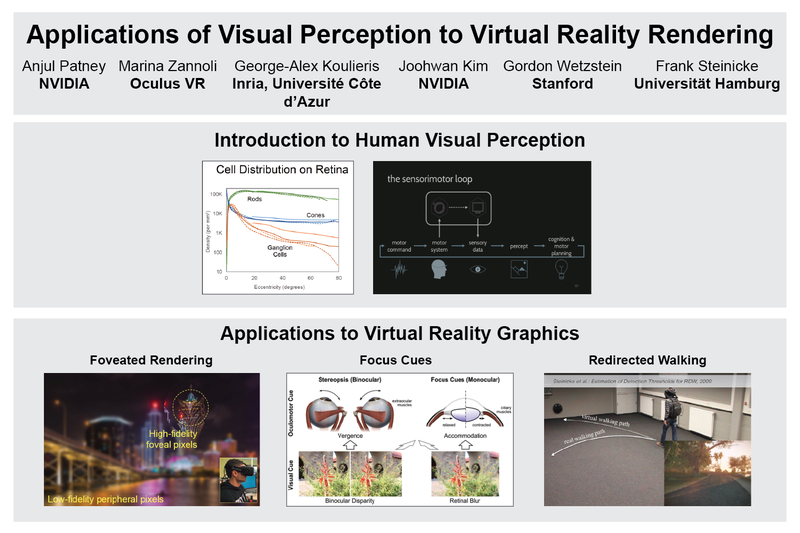
Over the past few years, virtual reality (VR) has transitioned from the realm of expensive research prototypes and military installations into widely available consumer devices. These devices enable experiences that are highly immersive and entertaining, and have the potential to redefine the future of computer graphics. Yet, several challenges limit the practicality and accessibility of modern virtual reality Head-Mounted Displays (HMDs), including:
This course explores the role of ongoing and future research in visual perception to solve the above challenges. Human visual perception has repeatedly been shown to be an important consideration in improving the quality of computer graphics while keeping up with its performance requirements. Thus, an understanding of visual perception and its applications in real-time VR graphics is vital for HMD designers, application developers, and content creators.
| 9:00 AM | Welcome Anjul Patney, NVIDIA Research |
Slides |
| 9:10 AM | A Framework for Perception-driven Advancement of VR systems Marina Zannoli, Oculus Research |
Slides |
| 9:40 AM | A Brief Dive into Human Visual Perception George-Alex Koulieris, Inria, Université Côte d'Azur |
Slides |
| 10:10 AM | Case study: Foveated Rendering Joohwan Kim, NVIDIA Research |
Slides |
| 10:40 AM | Break | -- |
| 10:50 AM | Case study: Incorporating focus cues into VR displays Prof. Gordon Wetzstein, Stanford University |
Slides |
| 11:20 AM | Case study: Redirected walking in VR Prof. Dr. Frank Steinicke, Universität Hamburg |
Slides |
| 11:50 AM | Summary / Q&A Moderated by Anjul Patney, NVIDIA Research |
Slides (same as introduction) |
Slides will be available after July 30.
Site last updated: August 4, 2017